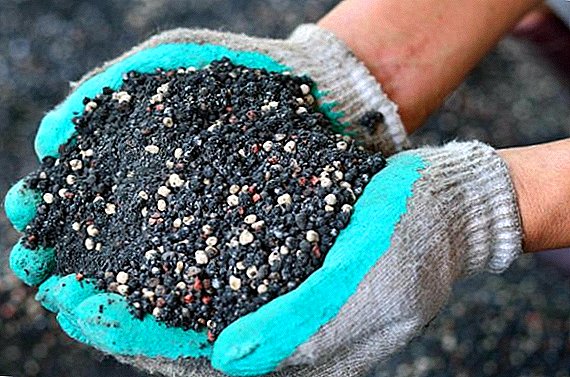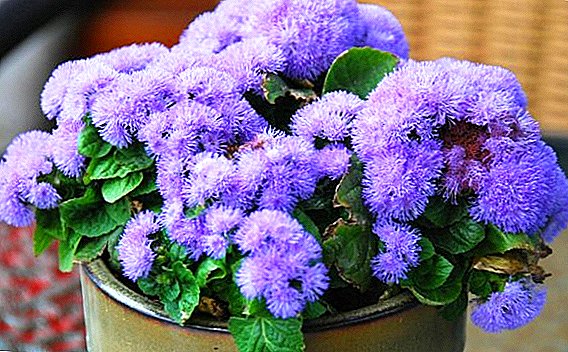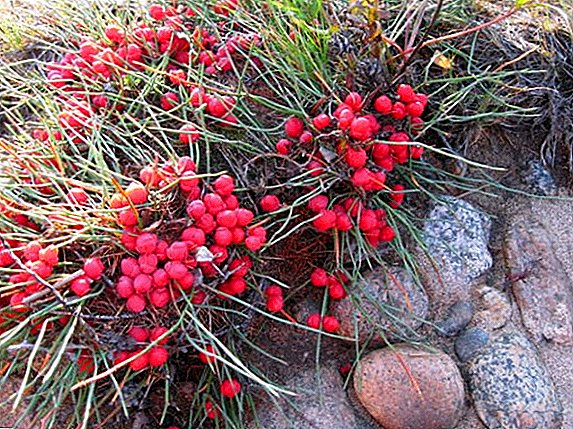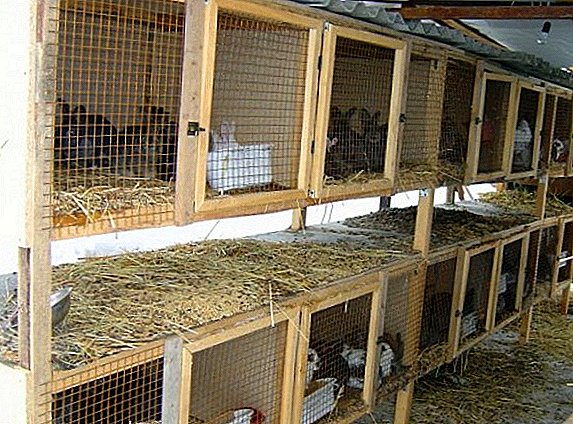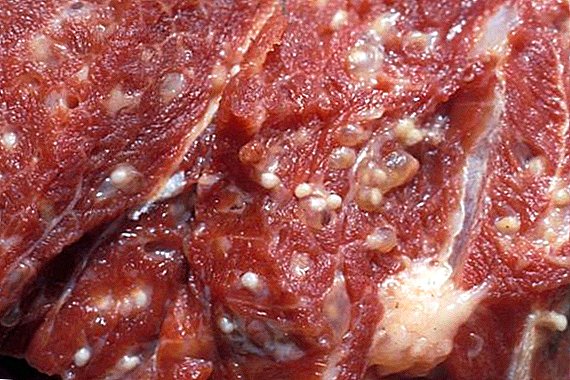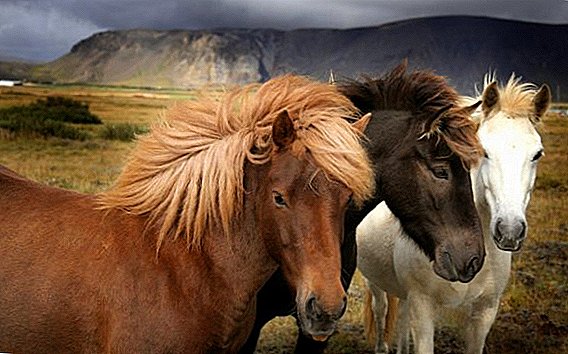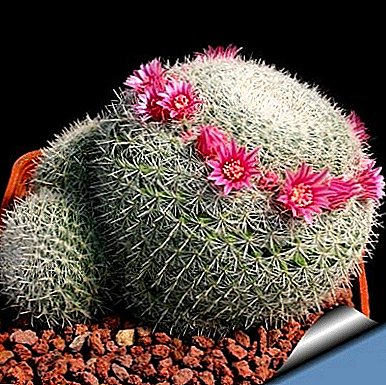
The diversity of the world of cacti can capture the imagination.
Among them, Mammilaria stands out.
These beautiful babies are distinguished from other species by the presence of numerous papillae on the stem.
Thanks to these nipples, mammyls, they got their name.
Mammilaria cactus is a whole family.
What only forms of this cactus does not exist. Spherical, elongated, disc-shaped. But whatever they were, their main difference is tubercules instead of characteristic ribs.
Thanks to the tubercles that transmit and reflect the sun's rays and retain moisture, they have a special vitality.
Another advantage for survival is the presence of fleshy, thick roots. They help kids recover from drought..
Mammillaria is distinguished by a variety of flowers, which are tubular, rounded, bell-shaped, and in color they are white, and yellow, and red in various saturations and shades.
After flowering, the surface is covered small fruitslocated in the sinuses.
Their seeds are yellow and red, white and black, pink and cream.
Views and their photos
Baum
Mummily is round, white spines, bright yellow small flowers. Growing in flocks.
Luti
It has a single or branched stem, forms 7-8 heads, from them the dense pillow in a shallow substrate turns out. It is strewn with small spines. Mammilyaria Lutea blooms large, up to 3 centimeters in diameter, violet - white flowers. Fruits are round, from yellowish to reddish-green.
Blossfeld
Spherical dark green stem, white-pubescent areoles, funnel-shaped flowers, wide open pinkish bright stripe in the middle
Bokasana
Strongly pubescent spherical stem blue-gray. The flowers are creamy with a touch of pink. Especially beautiful when it is covered with elongated bright red fruits.
Wilda
Wildma's Mammilya (Mammillaria wildii) It has an elongated thick stem, the diameter of which is 5 cm. The thin papillae are elongated, it has golden spines, the central one is hook-shaped. It blooms with small flowers in white. Easily forms babies, as a result of a strong branch and grows rapidly.
Zeilman
The short stem looks like a cylinder. The flowers are bright pink, spring white. Thickly littered with curved spines.
Carmen
Light green stem, globular or ovoid forms 5-9 cm long. It has a cone-shaped nipples. Axilla with white setae, furry. The spines are thin, elastic, white-yellow. There are no central ones. Flowers elongated, about 1 cm long and of the same diameter. Green and white fruit, 6 mm.
Parkinson's
The stem is green with blue, clavate, 15 cm long and 8 cm in diameter. Covered with centimeter papillae. Round areola pubescent with strongly wavy setae. With age, bare.
Slender
Ten centimeter cylindrical stem having a large number of child shoots.
The tubercles are short, glabrous, obtuse, with radial whitish spines, the central ones are light and dark brownish. Blossoms are pale yellow with a pink or brown stripe in the fall. Branched, forms whole groups.
Elongated
Cylindro-shaped stem, which, as it grows, lays down. At the base of a strongly branched, turning into a dense pad. At the tops forms a kind of outlet.
Thanks to this arrangement of the thorns, the stem is as if covered with an openwork pattern. Flowers are small, yellow.
Prickly
The stem is columnar, up to 25 cm in length and with a diameter of 8-10 cm. The plant has round, areola with pubescence on top. Covered with white wool and bristles, as well as needles of a reddish hue. Blooms in funnel-shaped carmine-purple flowers.
Hana
Globular, up to 10 cm in diameter, stem, surrounded by child shoots. White with brown tips spines. It is distinguished from other species by very dense pubescence. During growth forms groups. Blossoms in small bright red flowers.
Dorsal
Very beautiful and unusual. It has many elongated dark green nipples. Blooms in large, bright yellow flowers..
Breaking
It got its name because of easily falling off children. Another name is slim. The stem is elongated, thin, and the cactus itself only 5 cm in diameter.
It has small nipples, it is as if covered with tubercles, on which white spines grow close to each other.
The flowers are very small. This is one of the rarely flowering varieties..
Excellent
The stem is like a ball up to 8 cm in diameter with white short spines. Mammilyaria cactus differs in a variety of shades of colors and needles - from delicate pink to rich red, below the photo.
Proliferator
The stem is covered with golden spikes in the center and white along the periphery, which almost completely covers it. Often blooms with white or yellow flowers. Forms numerous babes.
Walker
Feels great even in adverse conditions. Prefers a sunny place, may exist on shaded window sills. It grows wide curtains. Blooms profusely in spring with small cream flowers. Forms red oblong fruit, giving the cactus a bizarre look.
Snow head
Its dark green stem is covered with white specks. Ball diameter stem - 12 cm. It has bare nipples that look like pyramids with four faces. The thorns are white, and in the center are greyish, black at the tips. Blossoms multicolored wreaths, large, up to 2 cm flowers.
Compressed
Stem green with a mixture of gray, like a ball with conical papillae. The spines are different in color, long. The flowers are red and the edges are bright.. It is frost-resistant, therefore can exist on the street
Zeilman
One of the most common. Differs from other long bloom. His pink or white flowers ring out on the stem.
Home care
How to care for the mammillaria? Immediately after the purchase, the cactus of Mammilyaria is transplanted into a pot more than the original by careful transfer.
In varieties of plain origin, thin, fibrous roots. They need a light, deciduous, fertile mixture.
Species with a tuberous root are planted in a turf substrate with a more dense structure.
A number of species originating from the mountainous regions of Mexico require lime or marble dust, as they naturally inhabit limestone.
 Before planting, the soil mixture is sterilized on "water bath" 2 hours.
Before planting, the soil mixture is sterilized on "water bath" 2 hours.
It will destroy the pathogens, viruses and fungi. Do not shake the earth.
A transplant is a stress for a flower, and it adapts better to a new place, if it partially remains in a familiar environment, slightly replaced with a new one.
Having noticed signs of infection, gently wash the roots and plant the flower in a fresh substrate.
Do not feed 2 months and pour later 2 days.
Lighting
Mammilys are children of the sun, so they need direct rays, especially hairy.
Temperature
Grow them at a moderate temperature. In summer, they feel fine even in hot weather. The optimum temperature for them is about 25 degrees.
Provide wintering at 11 -13 (pubescent 15) degrees. It is necessary for flowering.
IMPORTANT. Do not water or rearrange cacti in winter.
All types of summer need to provide fresh air, bring them to the balcony or keep the window to breathe.
Air humidity
 Dry air of apartments is not an obstacle to growth, but at the same time light summer spraying of cacti is useful.
Dry air of apartments is not an obstacle to growth, but at the same time light summer spraying of cacti is useful.
Do this by eliminating the access of direct rays of the sun, in order to avoid burns.
Watering
How to water? Excessive watering - the enemy Mammilyarii.
It leads to decay of the roots.
Lightly moisten the soil as it dries.
Do not let water stand in the pan.
Water can be taken from the usual tap.
Its rigidity does not harm Mammillians, because they grow on limestone and are used to it.
Top dressing
How and what to feed? In top dressing Mammillaria need from April to October. This is the time of flower growth, and therefore, treat it once a month with a special fertilizer.
Transfer
These are slowly growing flowers. Replant them less often than leaf.
Some varieties that develop actively require frequent transplantation. Adults - once every two, and preferably three years.
Transshipment spend with a lump of old land. Do not shake her and do not cut healthy rootsso as not to injure them.
Noticing that the roots began to die off, dry out, or they showed signs of a disease, act radically: remove the damaged part.
When transplanting a new container should be wider by 1.5 - 2 centimeters. Peresadiv, cactus do not water.
In early winter, after flowering, in a dry soil, so that plants do not "Awakened". The transplanted plant is placed in the winter, watered after 2 weeks.
Breeding
 There are two types of breeding cacti:
There are two types of breeding cacti:
- Children
Mummily is formed by children with air roots. They are slightly buried in loose soil mixture consisting of sand and sod. For stability, they are supported by pebbles, which are removed when the baby takes root. - Seeds
Take a shallow cup, make drainage holes. Fill drainage with the first layer and soil with the second one.The substrate should be loose, with a high content of sand. Seeds scatter on the surface, spray from the spray. The container is covered with glass and placed on a bright place away from the sun's rays, to eliminate the greenhouse effect.
Open a greenhouse daily, providing breathing crops.
IMPORTANT. Ensure that there is enough moisture in the plantings, when dried, the seeds will die.
Plant seedlings that have reached the size of a pea.
Seedlings should be gradually accustomed to the air. A couple of days open shoots for 5 minutes 2-3 times a day, then for 10. So increase the time of ventilation.
There are species of cacti that also multiply by seed, such as: Ferocactus, Rebution, Cereus, Decembrist, Opuntia.
Diseases and pests
Most often, they are affected by rot, which leads to the death of the plant. The sick part (it cannot be cured) is removed, the surviving part is rooted or vaccinated.
IMPORTANT. After removal disinfect the healthy part with alcohol or charcoalotherwise the infection will return.
 Inspect pets using a magnifying glass or magnifying glass.
Inspect pets using a magnifying glass or magnifying glass.
Immediately remove patients from healthy and spend treatment for prevention.
The most harmful and difficult-to-kill pest is cactus mite.
It leaves traces similar to rusty spots. They are affected by specimens with soft stems and delicate skin.
Dehydrated surface is not able to recover.
Destroy it, washing the cactus with warm water, and then treating the stems with a solution of alcohol or toxic chemicals (Fufanon, Aktellik). So that the tick is not used to drugs, alternate them.
Another parasite is worm. Pink worm-shaped females, in white fur coats, are immediately noticeable, so they can be immediately destroyed.
Much more dangerous than a worm that settled in the root system. A signal of this is the stalled growth or absence of flowering.
Noticing this, carefully inspect the roots. They will see cocoons - larvae of the worms.
Sustain infected areas in hot, 45 degrees, water 15 minutes - it will kill the pestcan be destroyed insecticide worms.
Hot water will save you from one more problem - nematodes. This pest penetrates into the roots, which because of this are covered with cones, and sucks the juice.
 Nematodes are of two types:
Nematodes are of two types:
- Gallic
Galls form nodules on the basis of their enzymes, which prevent the roots from feeding. They die off, along with the eggs of the parasite fall into the soil and continue to spread the infection. - Cyst
Destroy the epidermis. Brown bags, breeding very quickly, are similar to small lemons, they hang from the roots. Cactus withers. They can be at rest for years and wake up at the most inopportune moment. Struggling with them disinfecting containers with chlorine or boiling water.
Mammillaria has recently become more and more popular among gardeners, they decorate window sills in many houses. Probably, some people will not understand what good can be seen in this green. "hedgehog".
What is the beauty in the thorns? But with proper care at home, the mammilaria will reward you with lush flowering, eye-catching and uplifting.


